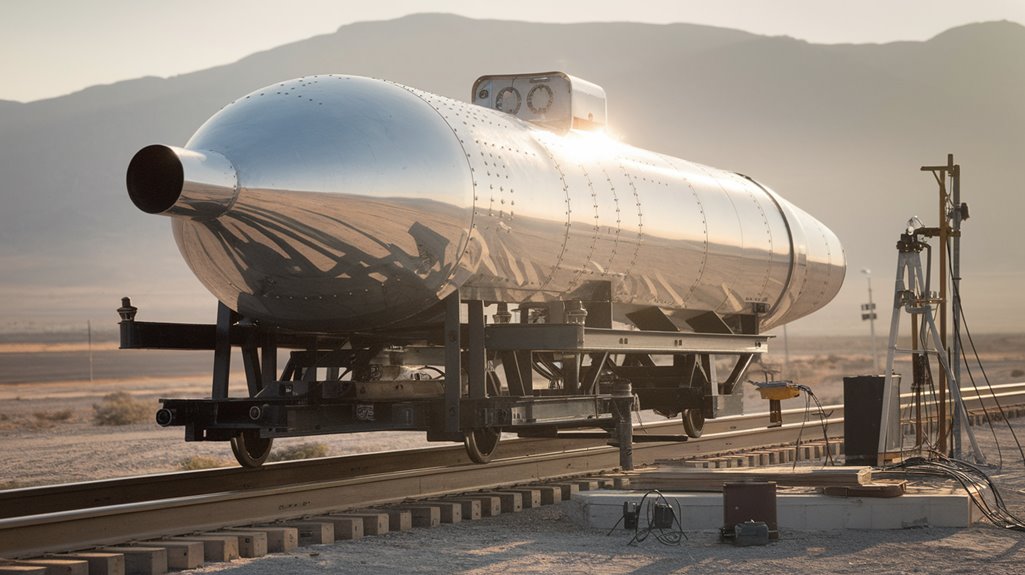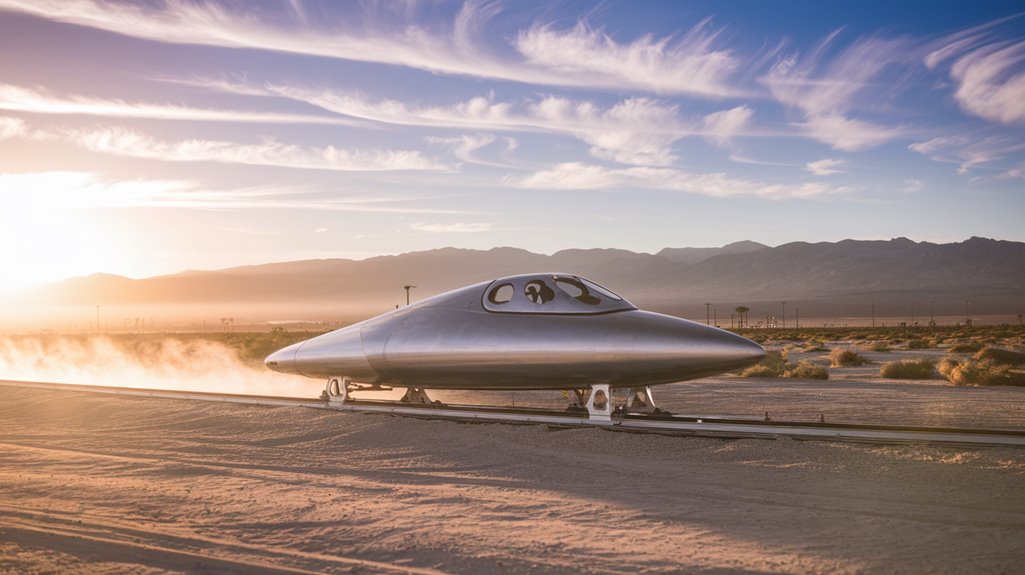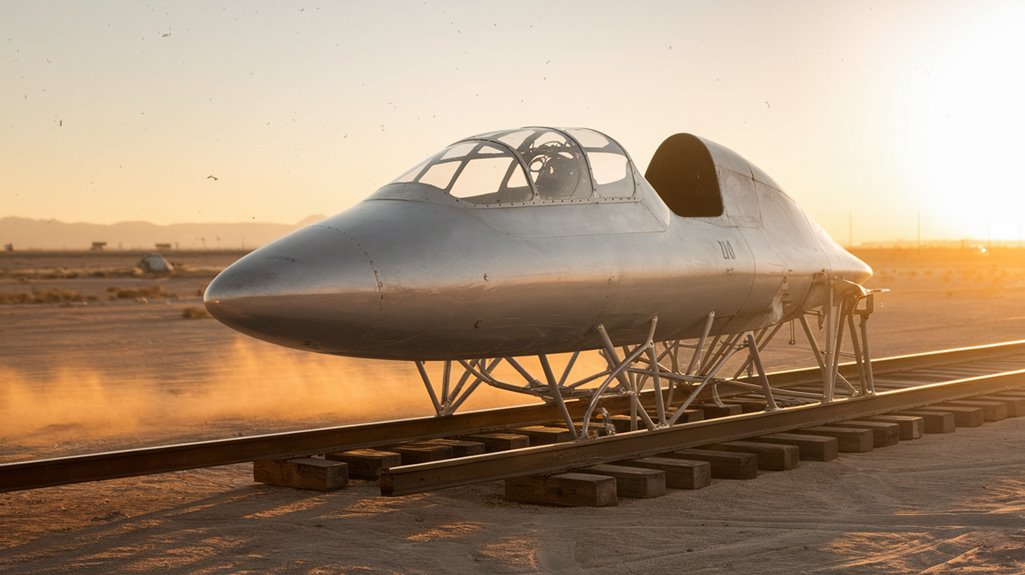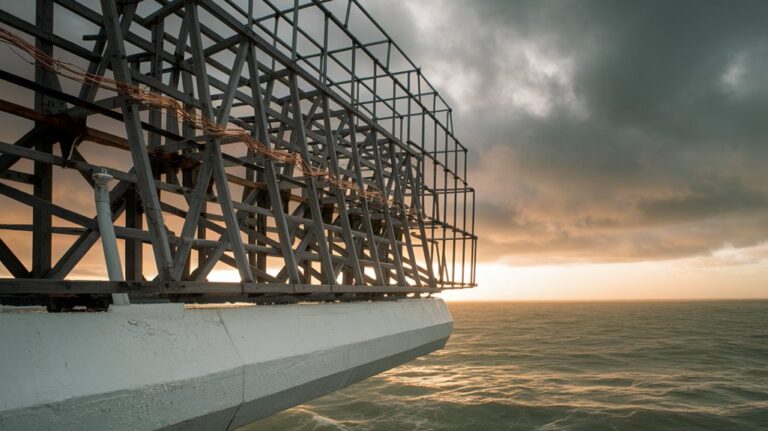Murphy’s Law: The Rocket Sled Tests That Started It All
When you've dropped buttered toast, you've probably noticed it lands butter-side down more often than not. This everyday frustration captures the essence of Murphy's Law, but you might be surprised to learn its true origins had nothing to do with breakfast mishaps. Instead, this universal principle emerged from a series of high-stakes rocket sled experiments in the 1940s, where one engineer's observation about human error would forever change how we think about planning and safety.
The Birth of a Universal Truth

While many popular sayings emerge gradually from folklore, Murphy's Law can be traced to a specific moment in aerospace history.
During rocket sled tests at Muroc Army Air Field in 1948-49, engineer Edward Murphy Jr. encountered a critical sensor failure that would shape engineering ethics forever. After discovering his assistant had wired every sensor incorrectly, Murphy expressed his frustration with what would become a universal truth about human error. Colonel Stapp went on to achieve 46 G-forces in his final test run. Though similar concepts existed before, including Augustus De Morgan's statement that whatever can happen will happen in 1866, Murphy's incident gave the principle its enduring name.
The concept gained momentum when project leader John Stapp refined Murphy's original statement into the now-famous "If anything can go wrong, it will go wrong."
What began as a specific critique of technical incompetence evolved into a principle of universal application, reminding engineers and technicians to anticipate potential failures in their designs and implementations.
Behind the Rocket Sled Experiments
The rocket sled experiments that spawned Murphy's Law represented some of aerospace history's most daring and innovative research. Initially conducted at Edwards Air Force Base and later at Holloman, these tests pushed the boundaries of human endurance and engineering capability. The testing facility at Edwards was eventually dismantled to extend the Holloman track length.
You'll find the testing methodology was both groundbreaking and perilous. Colonel John Stapp, a fearless physicist, often served as his own test subject, riding the rocket sled at mind-bending speeds to improve safety harnesses. Comprehensive practice and feedback helped refine their testing procedures and safety protocols.
The experiments utilized a kilometers-long railroad track where the sled, powered by solid fuel rockets, could reach speeds up to Mach 8.5. Engineer Edward Murphy's involvement proved essential when he developed specialized sensors to monitor test subjects, though initial sensor malfunctions led to his famous observation about things going wrong.
Key Players in Murphy's Legacy
Several remarkable individuals shaped the legacy of Murphy's Law through their pioneering work in aerospace safety.
Captain Ed Murphy's influence extended far beyond his famous quip, as he later contributed to critical safety innovations for iconic aircraft like the F-4 Phantom II and SR-71 Blackbird.
Similar to how Jimmy G maintained four decades of influence in the hardcore punk scene, this systematic approach to safety stood the test of time.
Much like Tim Murphy's approach to three straight titles at Harvard, this philosophy emphasizes consistent excellence through thorough preparation.
Colonel John Stapp's dedication to safety research led to three major breakthroughs:
- Groundbreaking G-force studies using rocket sled tests
- Implementation of mandatory seat belts in vehicles
- Creation of scholarships for automotive engineering advancement
You'll find Murphy's influence reflected in modern defensive design principles, where engineers anticipate potential failures before they occur.
This approach has transformed various industries, from aerospace to automotive safety.
Together, these pioneers established safety standards that continue to protect lives through their emphasis on thorough testing and failure prevention.
From Engineering Mishap to Cultural Phenomenon
Originally sparked by a frustrated engineer during rocket sled tests in 1949, Murphy's Law transformed from a simple workplace remark into a cultural touchstone that resonates across generations.
When Edward Murphy blamed his assistant for incorrectly installing sensors during a chimpanzee trial run, he couldn't have known his words would revolutionize engineering ethics and design resilience. The principle has evolved to emphasize the importance of business continuity planning.
Scientists like Augustus De Morgan had proposed similar ideas as early as 1866, demonstrating how universal this principle would become.
You can trace the law's meteoric rise to John Stapp's press conference, where he reframed Murphy's criticism as a principle of defensive design.
The concept quickly spread beyond aerospace circles through media coverage, eventually finding its way into everyday conversation.
While some criticize it as overly pessimistic, Murphy's Law has become an essential reminder in professional fields that anything that can go wrong should be anticipated and prevented.
The Evolution of the Famous Phrase

- Captain Murphy's initial technical observation about sensor installation.
- His subsequent warning about choosing catastrophic options.
- Stapp's streamlined version that caught public attention.
While many view it as a pessimistic statement, you should understand that Murphy's Law actually emphasizes engineering preparedness.
The MX981 project testing at Edwards Air Force Base demonstrated this principle through rigorous safety protocols and meticulous planning.
It's not about expecting failure, but rather anticipating and preventing it through careful design and thorough testing.
The team's understanding of measurement uncertainty in their strain gauge readings helped them develop more robust testing procedures.
Historical Records and Documentation
While the spirit of Murphy's Law emerged from engineering practices, its documented history begins in 1951, when the term first appeared in print.
You'll find its earliest citations in the 1955 Aviation Mechanics Bulletin and Lloyd Mallan's book "Men, Rockets and Space Rats," marking its growing historical significance.
The terminological origins differ from today's popular version.
 press conference about the rocket sled tests.
press conference about the rocket sled tests.










